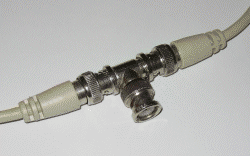-
Notifications
You must be signed in to change notification settings - Fork 2
/
Copy pathNetworking.Rpres
241 lines (153 loc) · 6.94 KB
/
Networking.Rpres
1
2
3
4
5
6
7
8
9
10
11
12
13
14
15
16
17
18
19
20
21
22
23
24
25
26
27
28
29
30
31
32
33
34
35
36
37
38
39
40
41
42
43
44
45
46
47
48
49
50
51
52
53
54
55
56
57
58
59
60
61
62
63
64
65
66
67
68
69
70
71
72
73
74
75
76
77
78
79
80
81
82
83
84
85
86
87
88
89
90
91
92
93
94
95
96
97
98
99
100
101
102
103
104
105
106
107
108
109
110
111
112
113
114
115
116
117
118
119
120
121
122
123
124
125
126
127
128
129
130
131
132
133
134
135
136
137
138
139
140
141
142
143
144
145
146
147
148
149
150
151
152
153
154
155
156
157
158
159
160
161
162
163
164
165
166
167
168
169
170
171
172
173
174
175
176
177
178
179
180
181
182
183
184
185
186
187
188
189
190
191
192
193
194
195
196
197
198
199
200
201
202
203
204
205
206
207
208
209
210
211
212
213
214
215
216
217
218
219
220
221
222
223
224
225
226
227
228
229
230
231
232
233
234
235
236
237
238
239
240
241
Computer Networking
========================================================
author: Jim Hogan
date: 2015-01-14
transition: fade
incremental: true
Research Computing and Data Management
-------------------------------------------------------
[http://github.com/brianhigh/research-computing](http://github.com/brianhigh/research-computing)
<small style="font-size:.5em">
This work is licensed under a <a rel="license" href="http://creativecommons.org/licenses/by-sa/4.0/">Creative Commons Attribution-ShareAlike 4.0 International License</a>.<br />
<a rel="license" href="http://creativecommons.org/licenses/by-sa/4.0/"><img alt="Creative Commons License" style="border-width:0" src="https://i.creativecommons.org/l/by-sa/4.0/88x31.png" /></a>
</small>
Introduction
========================================================
* A 30-minute introduction
* Some historical background
* The purpose
* Evolution to contemporary computer networks
* Key technical aspects including:
+ networking topologies
+ protocols and standards
+ networking system components
Networking History
================================================================

Networking History
================================================================
### 1792

----
### Chappe Telegraph
]
Moving Along
================================================================
### 1889

-----
### 1943

Enter Binary
======================================================
## 10000000010111110111000000000001
Some Binary Basics
=======================================================
Recognize this number?
128.95.112.1
How about this one?
10000000010111110111000000000001
Question
==================================================================
>Would not Morse code be considered a binary communication protocol?
Computer Networks: What's the Point?
========================================================
1. Allow a computer system/device to communicate with another computer system by exchanging data
2. Allow humans to interact with computer systems
3. Allow humans to interact with other humans.
Contemporary Computer Networks: Key Elements
==================================================================
* Key Elements
+ Binary Operation
+ Packet Switching
+ Protocols
* Another biggie:
+ Layered Model
* And some other bits:
+ software and hardware components
+ network topologies
+ network speeds
+ more...
Protocols, Standards and Governing Bodies
=============================================================
 International Telecommunicatios Union
 Internet Engineering Task Force
The TCP/IP Protocol Suite
==============================================================
* Embodied in documents called "RFCs" (Request For Comment)
* Many design decisions around factors like efficiency and reliability
* Some protocols humorously start with the word "Simple" or "Lightweight"."
Questions
==============================================================
> How many different protocols are under the TCP/IP umbrella?
> What is ICANN? IANA?
Packet Switching and Routing Metrics
=============================================================

* Hops
* Latency
* Congestion
* Queuing
Resolution of Names and Addresses
==============================================================
* DNS: phage.deohs.washington.edu => 128.95.230.32
* ARP: 128.95.230.32 => 26:a5:b7:20:f0:35
Question
=============================================================
> What were the design goals of ARPANET?
Data Flow of the Layered TCP/IP Model
=============================================================

[The Internet Protocol Suite Wikipedia Page](http://en.wikipedia.org/wiki/Internet_protocol_suite)
Layers, Protocols, and Encapsulation
=============================================================
(Not translated from the Dutch)

Types of Networks
=============================================================
* LAN - Local Area Network
* WAN - Wide Area Network
* LAN - less need for routing
* WAN - more need for routing
Topologies and the Networking Layer
=============================================================

* Mesh, Star and Tree arguably more common in this era
* Complex networks can combine elements of several topologies
Link Layer Technologies (Ethernet Rules!)
==============================================================
From bus-based in the 80s

To the familiar RJ45

----
Over copper and fiber media

All standards thanks to

Network Speeds
=======================================================
Familiar Speeds in Common Use:
10 Mbps - Ethernet 10BaseT - outmoded
100 Mbps - "Fast Ethernet" - still very common
1000 Mbps - "Gigabit Ethernet or 1Gbps" - typical in new devices
Faster speeds possible but expensive.
Primary Networking Devices
========================================================
* switches
* router
* access point
----
Devices may combine functions and be hard to distinguish by appearance.

Using the Network Effectively
========================================================
* network could be performance bottleneck
* wired connection more reliable than wireless
* read and write speed to local disk always faster
* troubleshooting:
+ start with closest component
+ learn how to use simple tool "ping"
+ get a grip on name resolution/DNS
+ know how to determine your IP address
[Networking on Computing Basics Wiki](https://github.com/brianhigh/computing-basics/wiki/networking)